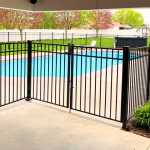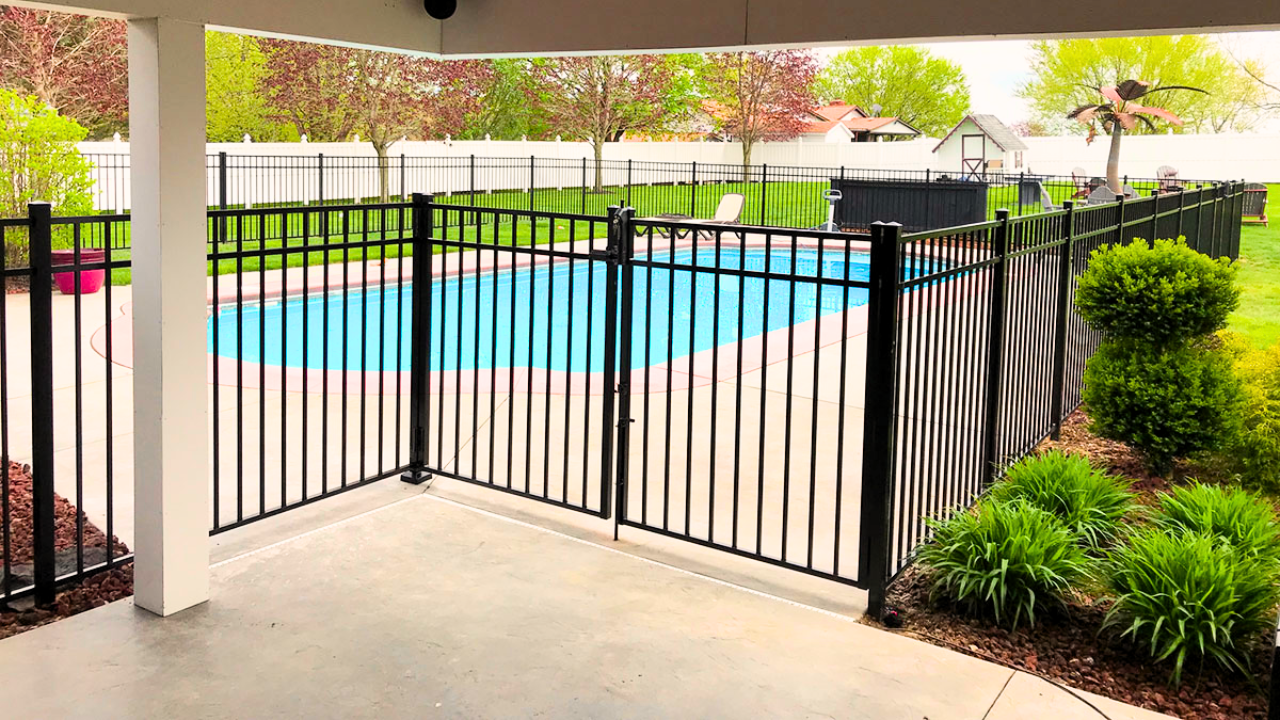Understanding Stone Calculators and Their Importance
Planning a landscaping project or outdoor renovation can feel overwhelming, especially when you’re trying to figure out how much material you’ll need. Whether you’re building a garden pathway, creating a retaining wall, or designing a decorative rock garden, accurate measurements make all the difference. That’s where an online stone calculator becomes your best friend, transforming complicated math into simple, reliable estimates that save you time and money.
Key Takeaways
- Stone calculators eliminate guesswork by providing precise material estimates based on project dimensions
- These tools work for various applications including driveways, walkways, gardens, and construction projects
- Accurate calculations prevent costly over-ordering or project delays from material shortages
- Different stone types require specific density and coverage considerations for proper estimation
- Using a calculator helps with budget planning and ensures efficient project completion
What Is a Stone Calculator?
A stone calculator is a specialized digital tool designed to determine the quantity of stone material needed for specific projects. These calculators use mathematical formulas that account for area dimensions, desired depth, and stone type characteristics. By inputting basic measurements like length, width, and depth, you’ll receive instant calculations showing how many tons, cubic yards, or bags of stone your project requires.
The technology behind these calculators considers the unique properties of different stone materials. For instance, crushed granite weighs differently than river rock, and pea gravel has distinct coverage rates compared to larger decorative stones. This precision ensures you’re getting estimates tailored to your exact material choice rather than generic approximations.
Why Accurate Stone Measurements Matter
Getting your stone measurements right isn’t just about convenience—it directly impacts your project’s success and budget. Ordering too little means additional delivery fees, project delays, and potential color or size mismatches if you need to reorder later. Conversely, over-ordering leaves you with expensive excess material that clutters your property and represents wasted money.
Professional contractors and experienced DIYers understand that accurate measurements also affect project quality. Insufficient stone depth for a driveway can lead to premature wear and settling issues. Too much material in a decorative application creates drainage problems and an unnatural appearance. The right amount ensures your project looks professional and performs as intended for years to come.
Types of Stone Projects That Benefit From Calculators
Landscaping Applications
Landscaping projects represent some of the most common uses for stone calculators. Garden beds benefit from a 2-3 inch layer of decorative stone that suppresses weeds while adding visual appeal. Pathways typically require 3-4 inches of compacted base stone topped with 1-2 inches of surface material. These varying depths and areas make manual calculations challenging, but calculators handle them effortlessly.
French drains and drainage systems also rely heavily on accurate stone quantities. These functional elements need specific grades of crushed stone at precise depths to channel water effectively. A calculator helps you determine exactly how much drain rock you’ll need for optimal performance without excess that increases project costs unnecessarily.
Construction and Building Projects
Foundation work and building construction demand precise stone calculations for stability and longevity. Gravel bases for sheds, patios, and concrete slabs require accurate quantities to ensure proper load distribution and drainage. Retaining walls need carefully calculated amounts of backfill stone to prevent water buildup and structural failure.
Driveway projects represent significant investments where calculation accuracy proves especially valuable. A residential driveway might need anywhere from 15 to 50 tons of material depending on size and base requirements. Getting these numbers right from the start prevents costly mistakes and ensures a durable surface that withstands years of vehicle traffic.
Decorative and Hardscaping Uses
Decorative stone applications let homeowners express creativity while adding value to their properties. Rock gardens, dry creek beds, and accent borders all require specific quantities of carefully selected stones. These aesthetic projects often mix multiple stone types and sizes, making calculation tools essential for coordinating materials and maintaining design vision.
Fire pit surrounds, outdoor seating areas, and water features also benefit from calculator accuracy. These projects combine functional and decorative elements where both appearance and performance matter. Using a calculator ensures you purchase enough material to complete your vision while avoiding the disappointment of running short during installation.
How Online Stone Calculators Work
Input Parameters and Measurements
Modern stone calculators request straightforward measurements that anyone can provide with a tape measure. You’ll typically enter length and width in feet or meters for rectangular areas, or diameter for circular spaces. Depth specifications usually range from inches to feet, depending on your project type and requirements.
Many advanced calculators offer additional fields for irregular shapes or multiple areas. You might input measurements for several garden beds or pathway sections, and the tool automatically sums your total material needs. Some calculators even include options for adding extra percentages to account for waste, settling, or future maintenance needs.
Calculation Methods and Formulas
Behind the user-friendly interface, stone calculators employ volume formulas adapted for different shapes and stone characteristics. For rectangular areas, the basic calculation multiplies length × width × depth to determine cubic footage or yardage. Circular areas use the formula πr² × depth, where r represents the radius of your circular space.
The calculator then converts volume measurements into weight or quantity based on stone density. Crushed limestone typically weighs about 2,500 pounds per cubic yard, while lighter materials like lava rock weigh considerably less. These density factors ensure you’re ordering by the correct unit—whether that’s tons, cubic yards, or bags—for your specific stone type.
Understanding Stone Density and Coverage
Stone density affects both weight calculations and coverage estimates. Dense materials like decomposed granite provide excellent compaction and stability but require more material by weight for the same coverage area. Lighter stones like pumice or expanded shale cover larger areas per ton but may need deeper applications for adequate coverage and weed suppression.
Coverage rates also depend on stone size and intended use. Small pea gravel spreads to cover more surface area per ton than large river rocks. Flat flagstones have different coverage calculations than rounded cobbles. Quality calculators account for these variations, giving you accurate estimates regardless of which material you’ve chosen for your project.
Step-by-Step Guide to Using a Stone Calculator
Measuring Your Project Area
Start by carefully measuring your project space using a quality tape measure. For rectangular areas, measure the longest length and widest width, even if the space has slight irregularities. Record these measurements in consistent units—all feet or all meters—to avoid conversion errors that throw off your calculations.
Irregular shapes require a bit more creativity in measurement. Break complex areas into smaller rectangles, triangles, or circles that you can measure individually. You’ll calculate each section separately and combine the results, or use a calculator that accepts multiple measurement sets. Taking a few extra minutes for accurate measurements pays dividends in ordering the right amount of material.
Selecting the Right Stone Type
Choosing your stone type affects both the calculator’s output and your project’s success. Consider the application first—driveways need durable crushed stone, while garden beds benefit from attractive decorative options. Climate matters too, as some stones handle freeze-thaw cycles better than others, preventing cracking and shifting over time.
Color, texture, and size preferences also guide your stone selection. Visit landscape supply centers to see materials in person when possible, as photos don’t always capture true colors and characteristics. Once you’ve decided, make sure to select the exact stone type in your calculator, as different materials yield significantly different quantity estimates.
Interpreting Calculator Results
Calculator results typically appear in multiple formats—cubic yards, tons, or bags—making it easy to order from any supplier. Pay attention to which unit your preferred supplier uses for pricing and delivery. Some providers charge by the ton, while others price by cubic yard, and understanding these differences helps you compare costs effectively.
Most calculators also suggest adding 5-10% extra material to account for settling, waste, and future touch-ups. This buffer proves especially valuable for projects using irregular stones or those requiring significant compaction. The small additional cost provides insurance against running short and ensures you have material on hand for maintenance down the road.
Benefits of Using Digital Stone Calculators
Cost Savings and Budget Planning
Accurate calculations translate directly into financial savings by preventing over-ordering. Stone materials aren’t cheap, and excess tons sitting unused in your yard represent hundreds of dollars you could have spent elsewhere. Calculators help you purchase exactly what you need, keeping your project within budget and avoiding costly mistakes.
Budget planning becomes much simpler when you know precise quantities upfront. You can request quotes from multiple suppliers based on actual material needs rather than rough guesses. This clarity allows for informed decision-making about whether to proceed with a project now, phase it over time, or adjust plans to fit available funds.
Reducing Material Waste
Environmental responsibility matters to many homeowners, and reducing waste aligns with sustainable practices. Excess stone materials often end up in landfills or require special disposal, creating unnecessary environmental impact. By ordering appropriate quantities, you minimize waste while maximizing the value of natural resources used in your project.
Less waste also means less labor and hassle. You won’t spend time and energy moving, storing, or disposing of leftover materials. Your project area stays cleaner and more organized throughout the process, and you avoid the ongoing eyesore of material piles cluttering your property for months after project completion.
Time Efficiency
Manual calculations eat up valuable time that could be spent on actual project work. Stone calculators deliver instant results, letting you move quickly from planning to execution. This speed proves especially valuable when you’re comparing different stone options or adjusting project dimensions to optimize costs or aesthetics.
The time savings extend beyond just calculations. With accurate quantities determined upfront, you can schedule deliveries confidently, coordinate with contractors efficiently, and complete projects without interruptions for material shortages. This streamlined approach reduces project duration and gets you to the enjoyment phase faster.
Common Stone Types and Their Applications
Crushed Stone and Gravel
Crushed stone forms the workhorse category for many construction and landscaping projects. Available in various sizes from fine dust to 3-inch rocks, crushed stone provides excellent compaction and stability. Common types include limestone, granite, and trap rock, each offering different colors and characteristics suitable for bases, driveways, and drainage applications.
Gravel encompasses naturally rounded stones worn smooth by water erosion. Pea gravel remains popular for walkways and play areas due to its comfortable texture and attractive appearance. Larger gravel sizes work well for drainage systems and as decorative mulch alternatives. These materials typically cost less than decorative stones while still providing functional and aesthetic value.
River Rock and Decorative Stone
River rock brings natural beauty to landscaping projects with its smooth, rounded appearance in various colors and sizes. These water-worn stones create attractive dry creek beds, garden accents, and ground cover that complements plants beautifully. Available from small pebbles to large boulders, river rock offers versatility for numerous design applications.
Decorative stones extend beyond river rock to include lava rock, marble chips, beach pebbles, and colored glass. These premium materials command higher prices but deliver distinctive visual impact. They’re ideal for focal points, accent areas, and high-visibility locations where aesthetics take priority over budget considerations.
Flagstone and Slate
Flagstone refers to flat stones split into sheets suitable for patios, walkways, and stepping stones. Common types include sandstone, limestone, and quartzite, each offering unique colors and textures. Flagstone creates elegant, natural-looking surfaces that age gracefully and integrate beautifully with landscaping elements.
Slate provides similar flat characteristics with enhanced durability and distinctive coloration. While typically more expensive than standard flagstone, slate’s longevity and refined appearance justify the investment for upscale projects. Both materials require different calculation approaches than bulk stones, focusing on square footage coverage rather than volume measurements.
Factors Affecting Stone Quantity Requirements
Depth and Coverage Area
Depth specifications dramatically impact material quantities, with each additional inch requiring substantial stone volume. A 2-inch depth application uses roughly twice the material of a 1-inch depth over the same area. Understanding appropriate depths for different applications helps optimize material usage while ensuring adequate coverage and performance.
Different project types demand specific depth requirements. Decorative applications might need just 1-2 inches, while structural bases for patios or driveways require 4-6 inches or more. These variations mean similar-sized areas can have vastly different material needs depending on intended use and load-bearing requirements.
Stone Size and Grade
Larger stones cover less surface area per ton than smaller materials due to spaces between individual pieces. A ton of 3-inch river rock spreads over less area than a ton of pea gravel because those gaps between large rocks reduce coverage efficiency. Calculators account for these differences, but understanding the principle helps you make informed material selections.
Stone grade refers to size consistency and shape uniformity within a material type. Clean, uniformly sized stone compacts better and provides more predictable coverage than mixed grades containing various sizes. Premium grades often justify slightly higher costs through improved performance and more accurate quantity predictions.
Compaction and Settling
Loose stone materials settle and compact over time, particularly in high-traffic areas or under weight loads. This settling means the initial depth you install won’t remain constant, especially with materials prone to significant compaction. Quality calculators suggest adding extra material to compensate for expected settling, ensuring your project maintains proper depth long-term.
Compaction requirements vary by application and stone type. Base materials for driveways need thorough compaction to prevent future settling and surface failure. Decorative applications in low-traffic areas experience minimal compaction. Understanding these differences helps you determine whether to order extra material and how much settling to expect from your specific project.
Tips for Accurate Stone Calculations
Always measure multiple times to verify accuracy before entering numbers into a calculator. Even small measurement errors multiply significantly when calculating volumes, potentially leading to hundreds of pounds of excess or shortage. Taking an extra minute to double-check measurements prevents costly mistakes and ensures your calculator results reflect real project needs.
Consider the shape of your area carefully and use the appropriate calculator formula. Round up measurements for irregular spaces to ensure adequate coverage rather than falling short. When working with curved edges or complex shapes, it’s better to slightly overestimate than to precisely calculate every angle and risk material shortage during installation.
Account for existing conditions that might affect material needs. Sloped areas require more stone than flat surfaces due to increased surface area. Areas with poor drainage might need extra depth for optimal performance. These site-specific factors should influence both your measurements and any adjustment percentages you add to calculator results.
Consult with material suppliers about their specific products before finalizing orders. Different suppliers’ versions of “pea gravel” or “crushed limestone” might have slightly different characteristics affecting coverage rates. Suppliers can also advise on appropriate depths and grades for your specific application based on their product knowledge and local experience.
Making the Most of Your Stone Calculator Results
Once you’ve received calculator results, review them carefully against your project scope and budget. Compare quantities across different stone types to evaluate cost differences and aesthetic trade-offs. Sometimes a slightly more expensive material that covers more efficiently proves more economical overall than a cheaper option requiring greater quantities.
Use calculator results to request detailed quotes from multiple suppliers. Provide specific quantity estimates and stone types to get accurate pricing including delivery fees. Many suppliers offer discounts for larger orders or can suggest alternative materials that achieve similar results at lower costs based on your calculated quantities.
Document your calculations and save them for future reference. You’ll likely need touch-up material over time, and having original measurements and stone type information makes reordering simple. This documentation also proves valuable if you decide to extend or modify your project later, providing a baseline for calculating additional material needs.
Consider ordering slightly more than the calculated amount, especially for unique or discontinued stone colors. Color batches can vary between production runs, making exact matches difficult for future repairs or expansions. The small additional investment in extra material provides insurance against matching challenges down the road.
Stone calculators transform project planning from frustrating guesswork into confident decision-making. These powerful tools consider all the variables that affect material requirements, delivering accurate estimates that save money, reduce waste, and streamline project execution. Whether you’re tackling a simple garden bed or complex hardscaping project, taking advantage of calculator technology sets you up for success from start to finish.
How accurate are online stone calculators?
Online stone calculators provide accuracy within 5-10% when you enter measurements correctly and select the appropriate stone type. They use industry-standard formulas and density values established through extensive testing. However, site conditions like slopes, irregular shapes, and compaction requirements can affect actual material needs, which is why most calculators suggest adding a small buffer to results.
Should I order extra stone beyond calculator recommendations?
Yes, ordering 5-10% extra material proves wise for most projects. This buffer accounts for settling, waste during installation, irregular areas not captured in measurements, and future maintenance needs. The small additional cost provides insurance against project delays from material shortages and ensures you have matching stone for repairs years later.
Can I use the same calculator for all stone types?
Most comprehensive stone calculators work for various stone types by adjusting density and coverage factors based on your material selection. However, specialized materials like flagstone or irregularly shaped boulders might require different calculation approaches. Always verify that your chosen calculator includes options for your specific stone type to ensure accurate results.










